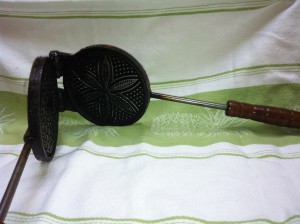The informant is a sophomore at the University of Southern California. She is twenty years old. She is also the Jr. Helenes chair for the USC Helenes, which means she works closely with the girls at 32nd Street School and other Helenes to create a mentoring system.
The informant let me interview her about a friendship bracelet making activity that took place between the Jr. Helenes and the USC Helenes:
“Some Helenes and Jr. Helenes were at our regular meeting place, at 32nd Street School. I taught them how to make the bracelets. It’s fun to teach other people to make the bracelets and it’s just a good way to bond. I don’t know why friendship bracelets are popular but they’re symbolic and meaningful. And simply making the bracelet together is a good bonding experience…For me, it’s my way of showing someone that they’re important to me—but it’s not like everyone who’s important to me has a bracelet; it just depends who I have that tradition with. I guess I also like the idea that other people can see them and ask who it’s from. With the Jr. Helenes, it’s nice to have a sort of bonding exercise so we can become really close. That way we’re more than mentors—we’re friends. I got started with friendship bracelets when I went on a month long trip to Hawaii during high school. We were making so many new friends, it was a good way to celebrate that, I guess. I ended the trip with like 7 bracelets. I also like giving them to people because they know I care about them. I like to let them choose the colors and have them hold on to the end while I make it so that it’s a process we’re doing together, and the finished product is something that will make them think of our friendship whenever they see it. I also am kind of superstitious, and I like to have them make a wish on the bracelet, because supposedly the wish comes true when the bracelet falls off.”
I agree with most of what the informant says about friendship bracelets. They are definitely symbolic of a friendship and a way to celebrate that relationship. She also made a good point about the process of making the bracelet serving as a time of bonding. What really struck me about my informant’s experience with friendship bracelets was the superstition tied to them. This was new to me, but it really adds another element to the bracelets, making them even more of a shared experience between two people.
Annotation:
Friendship bracelets can be found in the movie Napoleon Dynamite (2004). In this movie, one character goes door to door selling the bracelets and later, Napoleon and his friend Pedro hand them out when Pedro is running for class president. Instead of being made from thread, these bracelets are made from plastic.
Napoleon Dynamite. Dir. Jared Hess. Perf. Jon Heder, Efren Ramirez, and Jon Gries. Fox Searchlight, 2004. Film.

